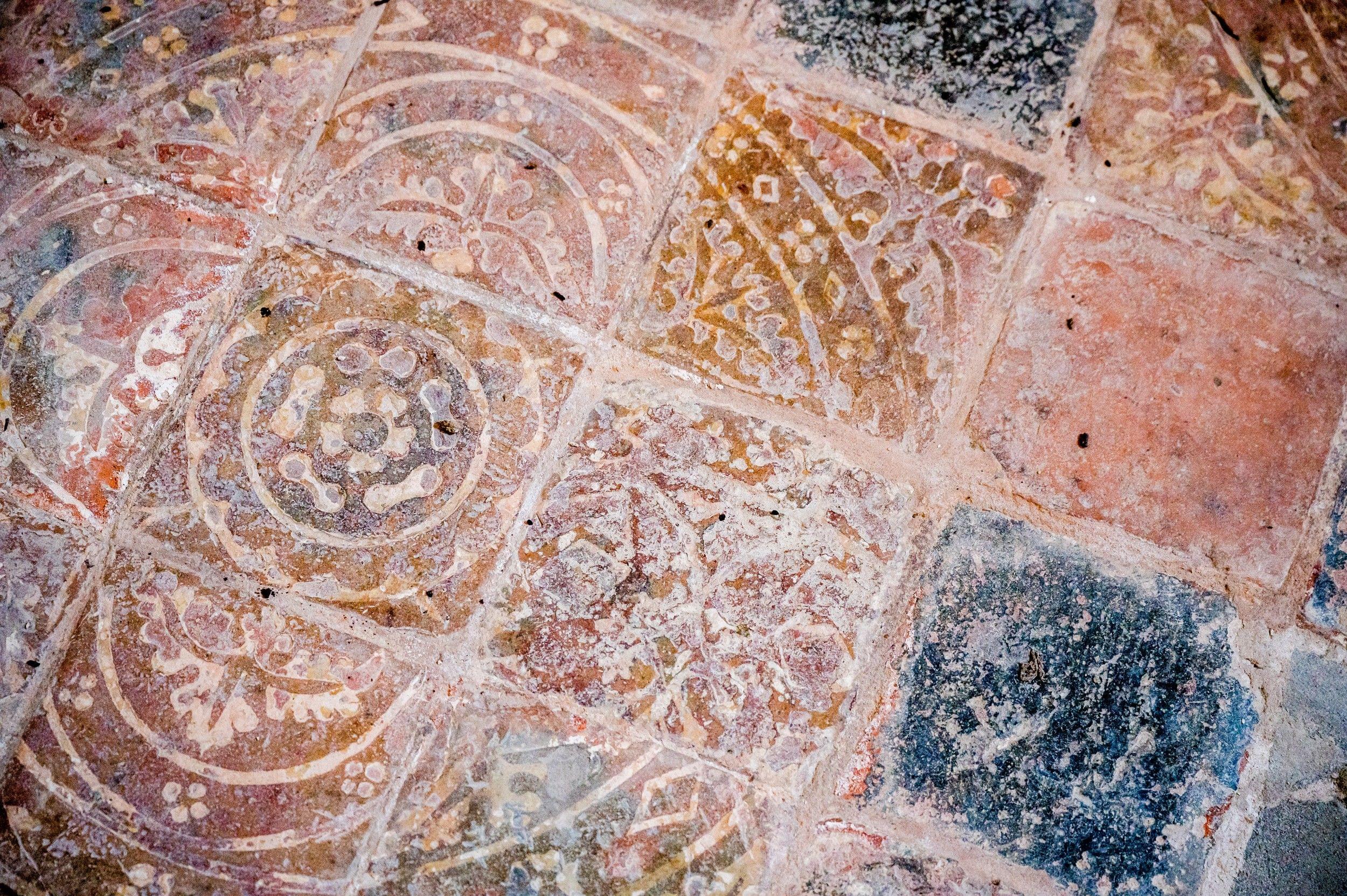All Saints & St James
Kings Cliffe, Northamptonshire
The church stands on an imposing site with the east wall of the chancel facing Hall Yard.

This archetypal medieval church is set in the heart of the village. It abuts a clearly later square tower (1633) topped by a good spire and on the south side a chapel, refashioned in 1621, juts into the churchyard.
Apethorpe, Northamptonshire
These two later changes reflect the patronage of the Fane (later Earls of Westmorland) who inherited the estate from the Mildmays. The latter had arrived here in the 1550’s and were the original creators of Apethorpe Hall / Palace, one of the most magnificent 16th century houses in the county.
The south chapel became their mausoleum centred on the truly magnificent tomb to Anthony Mildmay (d1613) by the royal sculptor Maximillian Colt. Raised on a great marble plinth it is like a huge four poster bed with its curtains drawn back by the Cardinal Virtues: above a dome and lantern where perch Faith, Hope and Charity. Beyond can be glimpsed the beautifully coloured contemporary English stained glass windows.
Elsewhere in the body of the church you will discover further examples of this family’s generosity including an 18th century marble font, panelled pulpit and coloured glass above the high altar by John Rowell of High Wycombe, 1732. The painting of Christ walking upon the Waters is by the Scottish artist Robert Scott Lauder (1803 – 1869).
Kings Cliffe, Northamptonshire
The church stands on an imposing site with the east wall of the chancel facing Hall Yard.
Nassington, Northamptonshire
Southwick, Northamptonshire
The tower is well buttressed and unusually decorated , the first is accounted for by the susceptibility of the earth to subside on account of the Romans extracting iron stone from the vicinity.